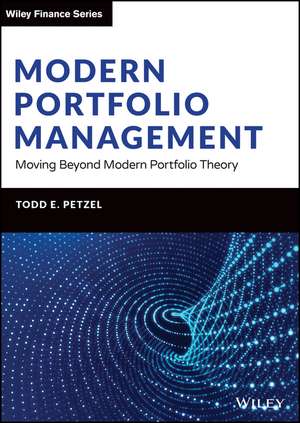Modern Portfolio Management – Moving Beyond Modern Portfolio Theory
Autor TE Petzelen Limba Engleză Hardback – 10 noi 2021
Get a practical and thoroughly updated look at investment and portfolio management from an accomplished veteran of the discipline In Modern Portfolio Management: Moving Beyond Modern Portfolio Theory, investment executive and advisor Dr. Todd E. Petzel delivers a grounded and insightful exploration of developments in finance since the advent of Modern Portfolio Theory.
You'll find the tools and concepts you need to evaluate new products and portfolios and identify practical issues in areas like operations, decision-making, and regulation. In this book, you'll also: Discover why Modern Portfolio Theory is at odds with developments in the field of Behavioral FinanceExamine the never-ending argument between passive and active management and learn to set long-term goals and objectivesFind investor perspectives on perennial issues like corporate governance, manager turnover, fraud risks, and ESG investing Perfect for institutional and individual investors, investment committee members, and fiduciaries responsible for portfolio construction and oversight, Modern Portfolio Management is also a must-read for fund and portfolio managers who seek to better understand their investors.
Preț: 322.64 lei
Nou
61.76€ • 67.10$ • 51.91£
Carte disponibilă
Livrare economică 31 martie-14 aprilie
Livrare express 15-21 martie pentru 79.100 lei
Specificații
ISBN-10: 1119818508
Pagini: 656
Dimensiuni: 178 x 261 x 36 mm
Greutate: 1.47 kg
Editura: Wiley
Locul publicării:Hoboken, United States
















